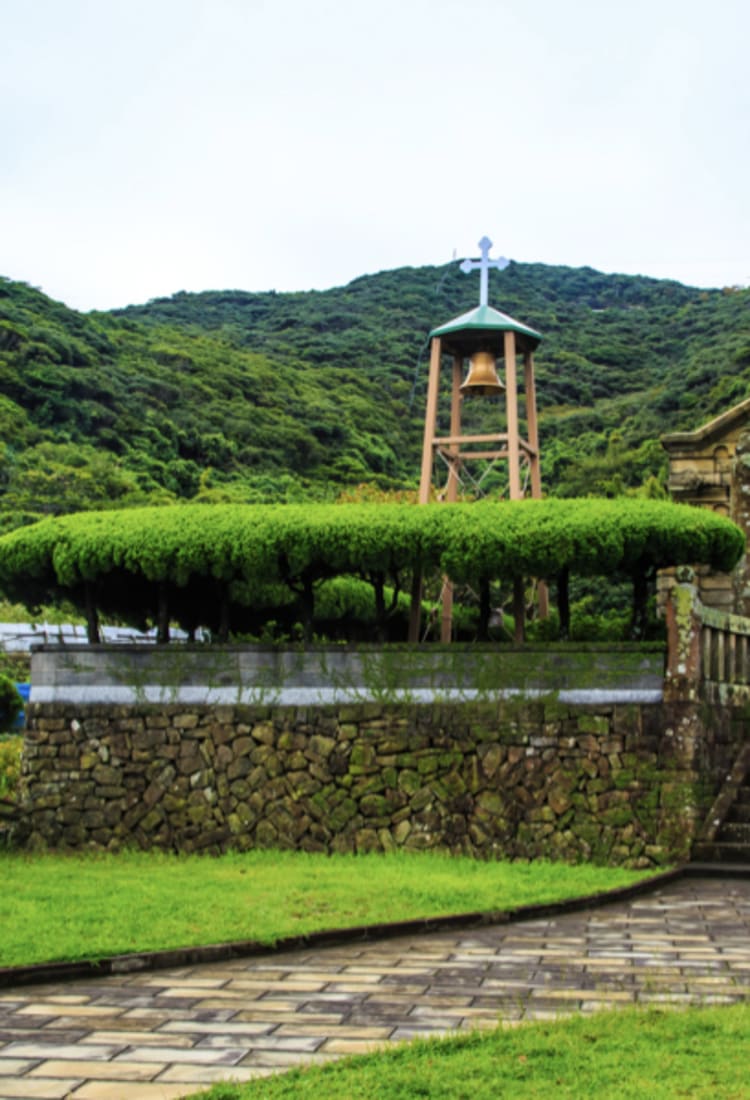
A tour of Christian holy sites and masterpieces of church architecture : Added to World Heritage list
A tour of Christian holy sites and masterpieces of church architecture : Added to World Heritage list
The history of Christianity in the Goto Archipelago has contributed to a unique local culture
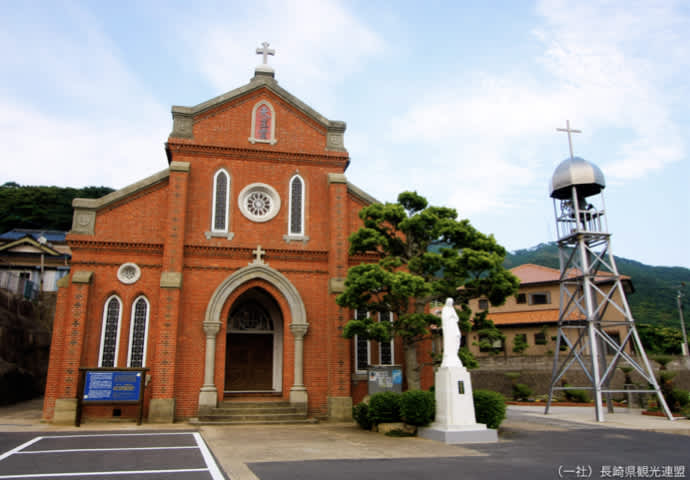
There are many Christian holy sites to be seen around the world, but a visit to the Goto Archipelago in Nagasaki Prefecture is especially recommended because of the unique history behind the churches in this part of Japan.
Christianity arrived in Japan in the 16th century, and became widespread not only among the common people but also among the daimyo (local feudal lords), but in the early 17th century, an anti-Christian edict banned the religion throughout Japan. For a period of around 200 years, from the 1600s to the mid-1800s, the shogunal government restricted foreign trade and contact with other countries. Nagasaki was the only port where foreign trade was permitted. For this reason, there were many Christian missionaries and believers among its population. Believers practiced their faith in secret, as “Hidden Christians” (kakure kirishitan), while pretending to follow other religions such as Buddhism. In the late 1700s, around 3,000 Christians from the Sotome district of Nagasaki set sail for the Goto Archipelago in search of a new home where they would be free from persecution.
The Christians continued to suffer harsh persecution even after moving to the Goto Archipelago, but did not abandon their faith. When the ban on Christianity was lifted, in the 19th century, they began to build churches under the guidance of foreign priests. Today, around 10% of the local population are Roman Catholics, and more than 50 carefully preserved churches can be seen across the archipelago.
Touring the churches of the Goto Archipelago gives a sense of how the early Japanese Christians must have felt, adhering to their faith despite the persecution they suffered, making the pilgrimage a very special experience.
The Goto Archipelago’s finest churches, and how to enjoy them
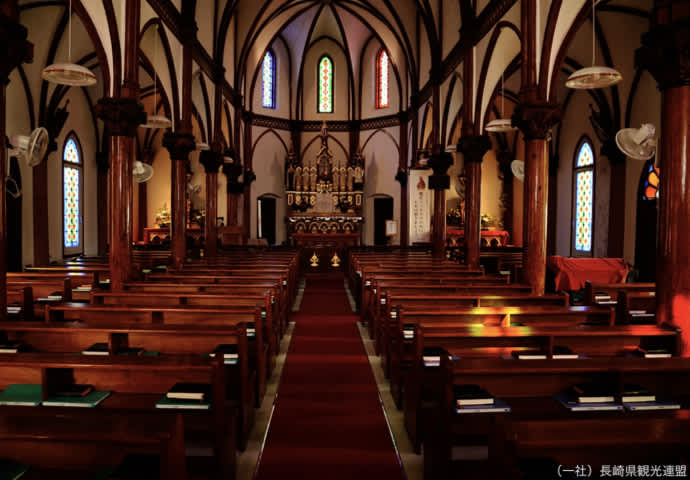
Of the more than 50 churches that survive, around 60% are in an area known as Kamigoto (Upper Five Islands) centering on the island of Nakadorijima, in the northeastern part of the Goto Archipelago. Seen from the air, Nakadorijima is shaped like a cross. What could be more appropriate for a Christian holy site?
So why are there so many Christian churches in the Goto Archipelago? It all comes down to one man: the Japanese architect Yosuke Tetsukawa. Born into a local family of master carpenters, Tetsukawa learned about western building techniques from a foreign missionary, combined them with Japanese building techniques, and took the lead in building churches, which were unknown in Japan at that time. Tetsukawa designed a number of the finest churches in the Kamigoto area, of which three are described below.
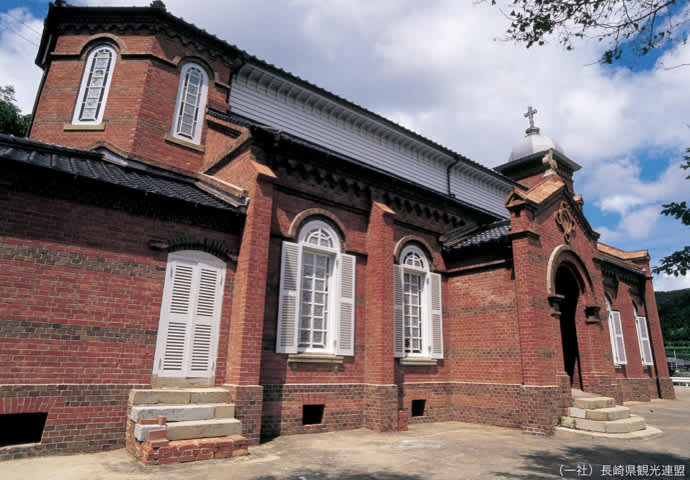
Kashiragashima Church, completed in 1919, is built of sandstone. It took over 10 years to build, with help from local parishioners, who painstakingly laid the blocks cut by the stonemasons one on top of another. The interior is decorated with flower motifs, creating a light and colorful atmosphere in sharp contrast with the heavy and imposing exterior.
Aosagaura Church is a beautifully balanced structure made of brick, with a rib vault (*1) ceiling. It was built under the guidance of a foreign missionary who procured architectural drawings from Europe. The first church on this site was built in 1879, and the present structure was completed in 1910. Built on high ground overlooking Nama Bay, it is also known for its beautiful views.
Ohso Church, distinguished by its silver-domed bell tower, is a well-balanced brick structure, its walls decorated with beautiful brickwork patterns.
It’s interesting to contrast and compare these three very different churches, all designed and built by Yosuke Tetsukawa.
*1: A rib vault is a vault in which transverse arches and diagonal arches act as ribs, dividing the vault into cells. This structure helps to reduce the weight of the vault and is characteristic of Gothic architecture.
Enjoy beautiful scenery and delicious cuisine during your tour
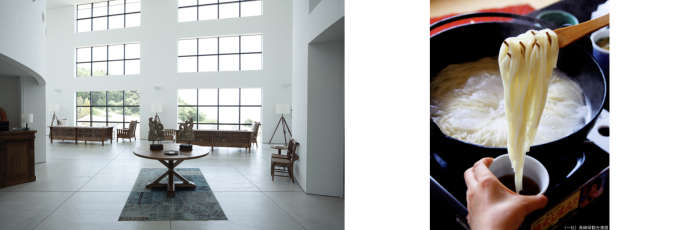
The Goto Archipelago is not just a pilgrimage destination; it’s also an exceptional resort area. While touring masterpieces of church architecture, you can enjoy beautiful scenery and delicious cuisine, and stay in comfortable hotels – everything you need for a wonderful holiday.
The best season to visit is summer, when you can enjoy sea bathing from the long and beautiful Hamagurihama Beach, but the climate of the Goto Archipelago is warm all year round, and winter and spring are also recommended, as the camellias that feature in the interior décor of the churches blossom through winter and spring.
A local dish you must try at least once during your trip is hand-stretched udon noodles (Goto tenobe udon). Made of wheat flour with camellia oil, a Goto specialty, they have long been a staple of the local diet. Served in a soup made with flying fish stock (ago-dashi), they make the ideal light meal.
As a place to stay, the Margherita Resort Hotel is particularly recommended. Its modern, stylish design evokes a monastery, suggesting a continuation of your pilgrimage. A restaurant serving delicious Italian cuisine that sets off seasonal, local ingredients to advantage, and open-air hot spring baths available for morning and evening bathing guarantee a relaxing and restorative stay.
A leisurely pilgrimage to the holy sites of the Goto Archipelago, far from hustle and bustle of the everyday world, is sure to be a soothing and relaxing trip.
For more information, visit




















































